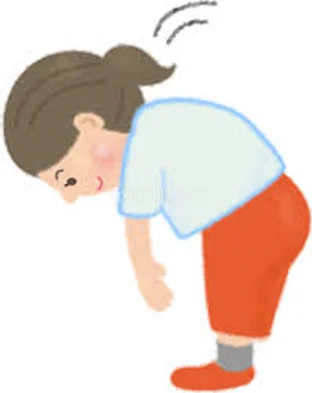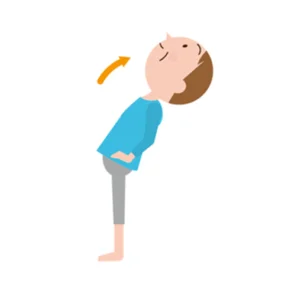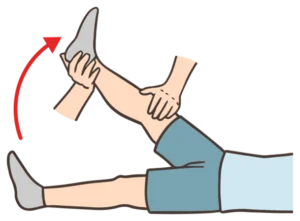Column Interrogations You may Have During the Medical Examination: Physical Abilities of the Patient
When visiting an orthopedist for back pain, many of us have had the specialist lifting our legs and bending our back.
And I think that many people at that time were thinking things like: “Why does he make me bend my back even though he knows I’m in pain…” or “It’s an ordeal for me to lift my leg…”.
In this article, I would like to explain what can be learned by looking at body movements during a medical examination.
Forward bend

The forward bend is the movement of bending forward at the waist and looking at one’s navel.
If pain increases when bending forward, it is called “back pain with forward bending disorder”.
The main age group most frequently affected by that are people in the prime of their working lives.
These people often sit for long periods of time, work in a squatting posture, or carry heavy loads.
This condition is caused by degeneration of the intervertebral discs and spine, and fatigue of the back muscles.
The diseases causing this include herniated discs and myofascial low back pain.
Backward bend

Bending backward is a movement in which the upper body is bent backward while looking at the ceiling.
Increased pain during bending backward is called “back bending disabling low back pain”.
The most common age of occurrence concerns the elderly population.
The cause is due to degeneration of the intervertebral discs or spinal canal stenosis caused by aging or other factors.
The diseases causing this include spinal canal stenosis, spondylolisthesis, and spondylolysis.
The Lasegue Test

A test in which the patient lifts the leg in extension from a lying position on the back.
Basically, this test is positive when pain occurs below 70 degrees.
Positive results are more likely in sciatica and herniated discs.
It is usually unilateral (occurring only in one leg).
Tenderness
Pain felt when pressure is applied to the skin with a finger or other object.
In the case of the lower back, it is mainly felt when the back is pressed when the patient is lying on his/her back.
The place where it hurts is called the tender spot.
It means that inflammation of the skin, muscles, or other parts of the body directly under the tender point is occurring.
In the case of lower back symptoms, a herniated disc or intervertebral arthritis may be the cause.
We will make a differential diagnosis based on imaging findings and the physical examination described above.
We hope that this has answered some of your questions.
This article was written by the ILC Staff



